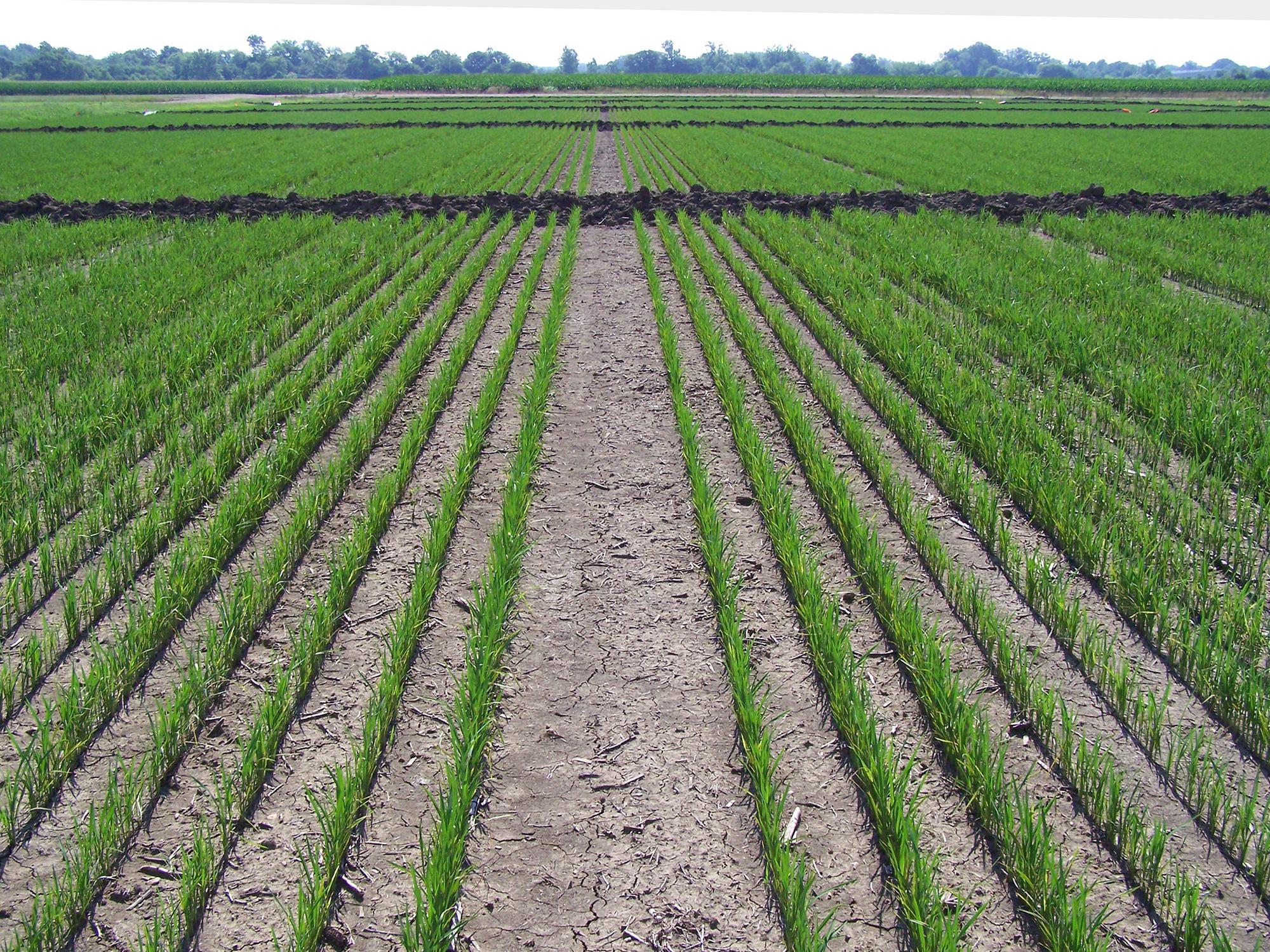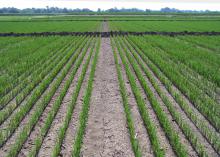Information Possibly Outdated
The information presented on this page was originally released on June 9, 2017. It may not be outdated, but please search our site for more current information. If you plan to quote or reference this information in a publication, please check with the Extension specialist or author before proceeding.
Rains challenge even Mississippi rice fields
STONEVILLE, Miss. -- Mississippi growers have flooded many of their rice fields now, but not before rains caused crop management challenges.
Bobby Golden, a rice and soil fertility agronomist with the Mississippi State University Extension Service, said that even though rice is flooded for the majority of the growing season, excess rains and wet weather can complicate crop establishment and management.
"Wet weather has delayed many post herbicide applications before flooding," he said. "In some cases, growers are waiting for soils to dry enough to complete levee construction and pre-flood fertilizer applications."
Golden, who is based at the MSU Delta Research and Extension Center in Stoneville, described 2017 as one of the state’s cleanest crops in the last several years, mainly due to the early wet weather maintaining the activity of residual herbicides.
“Luckily, we’ve had only a few isolated cases of herbicide drift and seedling disease issues that required replanting,” he said.
Golden said the state’s rice acreage could possibly move down to the 100,000- to 115,000-acre range. Mississippi growers averaged 7,180 pounds per acre in 2016 on 194,000 acres. National acreage is also down.
Extension agricultural economist Brian Williams said a big driver of the markets right now is the expectation of a smaller U.S. rice crop.
“Current projections foresee a 17 percent decrease in rice acreage nationally and a 10 percent reduction in rice production in the United States,” he said. “Similarly, global production is also expected to be down slightly.”
Williams said rice markets have been trending higher since the first part of May and are at their highest point since July 2016. Currently, September rice futures are trading for $11.36 per hundredweight.
“Prices are still relatively low compared to historical levels. In 2013-14, rice futures were trading in the $15 to $16 range,” he said. “When we look at most of our other row crops, particularly corn and soybeans, rice has been following a similar pattern. Markets have been holding steady for the last year or two, hovering in the $9 to $12 range for a better part of that time.”
Williams said corn and soybeans have followed a similar trend and are settling into a relatively narrow price window.
In 2016, the estimated value of production for Mississippi rice was almost $134 million, a 15 percent increase from 2015.



